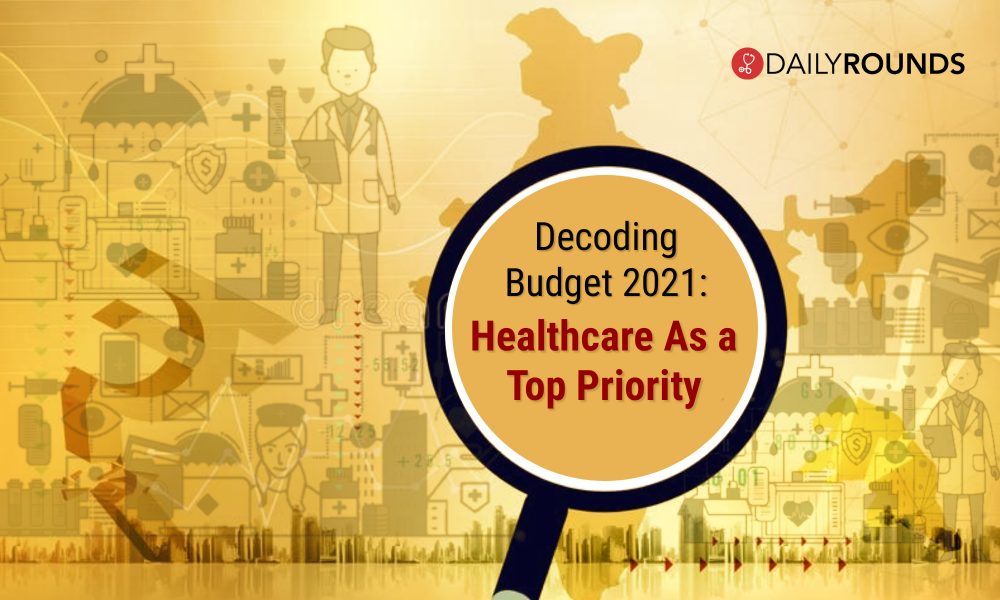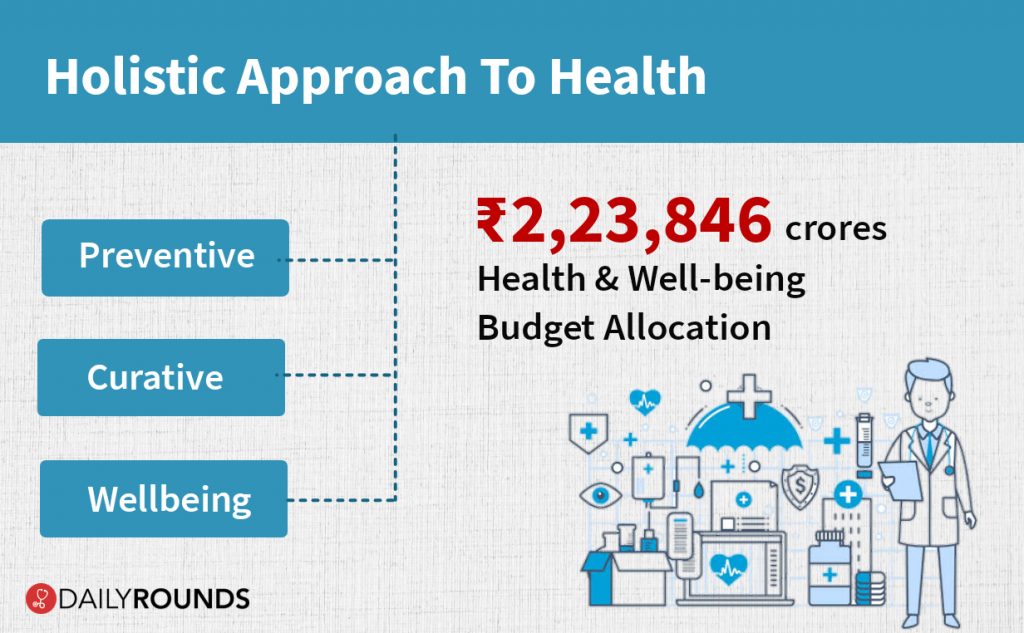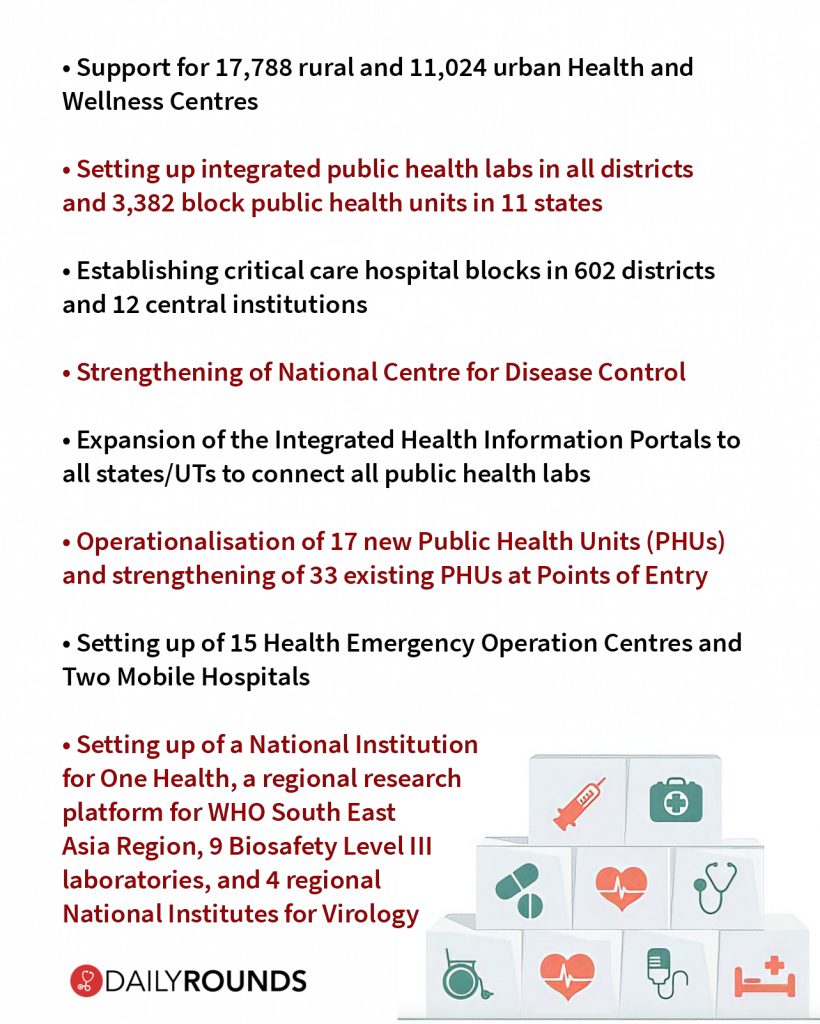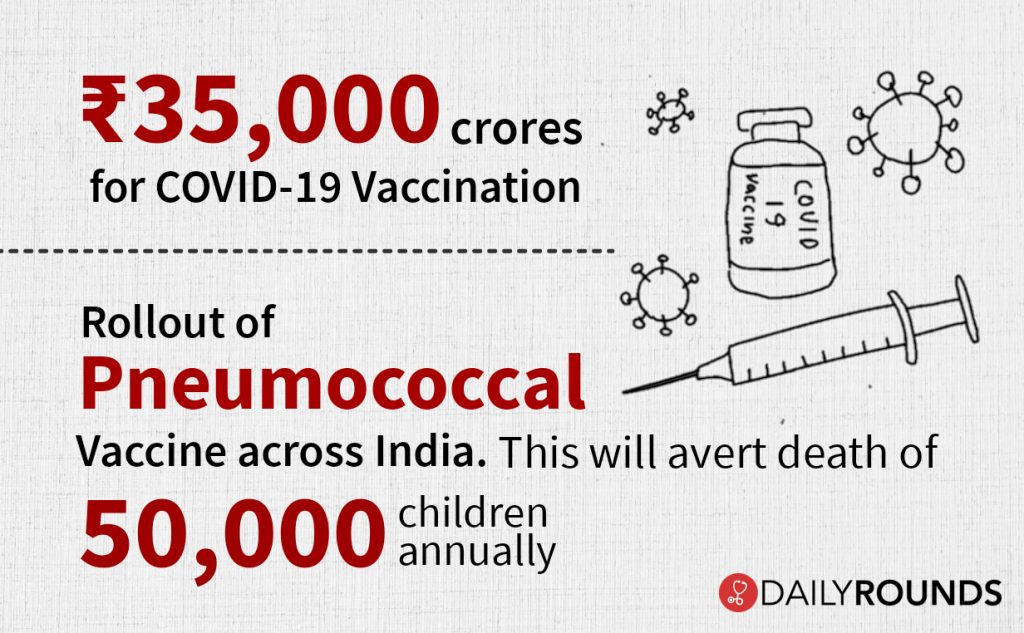
Decoding Budget 2021: Healthcare As a Top Priority
As the Union Budget presentation for the year 2021-22 began in the Parliament, all eyes and ears were on ‘Healthcare’ and it didn’t take much longer before the finance minister Nirmala Sitharaman addressed healthcare as the first item on her union budget checklist. All credits to the impact of COVID-19 on governance.
The finance minister announced fund allocations and new schemes for healthcare as the first of the six pillars this budget rested on. “Taking a holistic approach to health, we focus on strengthening three areas: preventive, curative, and wellbeing,” she said in the parliament.

The government has announced a total outlay of ₹2.23 lakh crore for the 2021-22 fiscal year. At the outset, this is a 137% increase over the revised healthcare estimates of budget 2020-21. But these figures need to be examined further for a clearer picture.
The 137 per cent hike that the finance minister announced includes various other allocations such as for water supply, sanitation (₹74,500 crores, accounting for 58% of the increase) and mitigation of air pollution, etc bundled under a new head of “health and wellness”. In addition to this, the increase in the healthcare budget from ₹94,500 crores to ₹2.23 lakh crore is driven in large part by budgetary allocations for Covid vaccinations. With a total outlay of ₹35,000 crores, it accounts for 27% of the increase.
So, excluding Covid vaccinations and water and sanitation expenditure, the remaining healthcare budget has seen a modest increase of 11 per cent. However, the budgeted expenditure for the Ayushman Bharat Scheme has been kept unchanged at ₹6,400 crores.
This is what the numbers have to say. Now let’s see how the different schemes announced by the Finance Minister look on papers.
PM Atmanirbhar Swasth Bharat Yojana
A new centrally sponsored scheme -PM Atmanirbhar Swasth Bharat Yojana – will be launched at an outlay of ₹64,180 crores over six years. “This will develop capacities of primary, secondary and tertiary care health systems, strengthen existing institutions and create new institutions to cater to detection and cure of new and emerging diseases,” said the Finance Minister.
The main elements of the scheme are:

Mission POSHAN 2.0
To strengthen nutritional content, delivery, outreach, and outcome, the supplementary nutritional programme will be merged with the POSHAN Abhiyan to launch Mission POSHAN 2.0. The government will adopt an intensified strategy to improve nutritional outcomes across 112 Aspirational Districts.
Made In India Vaccines
Finance minister Nirmala Sitharaman allocated a separate head for covid-19 related interventions. As expected, a separate fund was allocated for covid-19 vaccination across the country. “I have provided ₹35,000 crores for covid vaccines in 2021-22 and committed to provide further funds,” Finance Minister said. India has two covid-19 vaccines available and has begun safeguarding not just its own citizens but also those of several other countries, she said. The Minister also said that two new COVID-19 vaccines will soon be announced in the country.

In addition to this, the budget also provided funds for rolling out another vaccine that protects against serious and potentially fatal pneumococcal infections. Back in 2016, the Union Health Ministry introduced the pneumococcal vaccine in five states — Himachal Pradesh, Uttar Pradesh, Madhya Pradesh, Rajasthan, and Bihar — in order to reduce child mortality. Presenting the Union Budget on Monday, the Union Finance Minister announced that this vaccine will be rolled out across the country. “This will avert the deaths of more than 50,000 children annually,” she added.
The budget has also introduced the National Commission for Allied and Healthcare Professions Bill. Which was introduced in Rajya Sabha by the Minister of Health and Family Welfare, Dr. Harsh Vardhan, on September 15, 2020. The Bill seeks to regulate and standardise the education and practice of allied and healthcare professionals.
When it comes to allocation for Institutions, All India Institute of Medical Sciences got a hike of over Rs 310 crore in the Budget. The Centre approved an outlay of Rs 3,800 crore for the hospital when it had allotted Rs 3,490 crore last year. “There is a large-scale expansion of infrastructure taking place at AIIMS. An increased outlay will help complete that and transform the hospital for the better,” said a senior doctor.
Apart from AIIMS, the Centre has increased the Budget outlay of other major hospitals in Delhi too. Safdarjung has been allocated Rs 1,515 crore, an increase of Rs 227 crore from last year’s Rs 1,318 crore. Ram Manohar Lohia has been allocated Rs 950 crore. The Budget outlay for Lady Hardinge Medical College and Sucheta Kriplani Hospital is Rs 600 crore and Rs 145 crore, respectively.
Commenting on the budget, Aster DM Healthcare founder chairman and MD Azad Moopen said the budget had seen a phenomenal increase in outlay for the healthcare sector, with a focus on addressing the key issues faced by the country today. “It is encouraging to see the shift in focus to prioritise preventive care and well-being, over just sickness-care,” he added.
Poonam Khetrapal Singh, regional director, WHO South-East Asia, says one of the greatest lessons this pandemic has taught the world is that health needs to be a priority. “The focus on health in India’s Budget announcement is a testimony to the country’s commitment to not just fight the novel coronavirus pandemic but also build a stronger and resilient health system,” she added.
The numbers and schemes for the healthcare sector in the newly announced Budget looks fair enough, even though many areas still remain unaddressed. Now, it’s all about the execution part, where the figures and plannings transform into schemes and actions. If executed in the right way, the budget funds and plans would help the healthcare sector in the country conquer new frontiers.
Follow and connect with us on Twitter | Facebook | Instagram